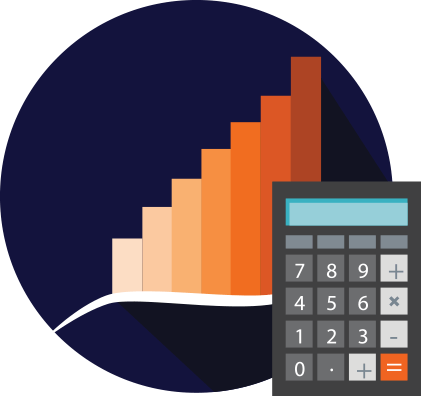Sometimes, retirement feels really far away – even if you’re in your 40s or 50s, it can still be over 20 years before you are “technically” retired; the social security age limit is certainly not going to go down, it’s going to go up.
What if you want your those funds that our wealth calculator is predicting for you early – before retirement? This is a common question we get at our focus groups! There are plenty of legitimate reasons for asking about early retirement funds, such as:
- buying a retirement home, like a beach cottage or home in a warmer climate than home
- providing funds for a child’s education or college fund
There are lots of scenarios. Here’s how you can make a plan to be prepared for growing your wealth while paying for the important items along the way.
1. Visualize Your Needs
If you think you might want your retirement funds early, get out a journal or piece of paper. Now, take some time and truly visualize and write down what your needs might be. Let’s use an example – say, you want to buy a retirement villa. What all is involved in that? Would you need the house, or also extra furniture because you’ll be keeping your current house and renting it out? Will you need an extra car or a small travel fund to commute? What will your lifestyle be in that new location – more expensive than your current location, or less?
As you can see, just a simple need – “I want a retirement home” – generates piles of follow-up questions. And you might feel a little uncomfortable answering these – that’s OK! Your needs can change, and when they do, you just come back to your plan and re-review and adjust. But it’s important to try and paint a broad picture of what you really will need those extra funds for earlier than retirement. (This is useful for your actual retirement too, by the way!)
2. Map it Out
Once you’ve got a clear idea on what your needs are – let’s map out what you’ll need and when you need it. In this piece, you’re taking your notes and basically putting them into a priority list. You’ll want to give a rough idea of the costs (just go with what you know for now), and a timeline if you know when you’ll incur those costs.
This map – even if it’s a very rough estimate – will set you ahead of 95% of investors. With this kind of information, you can use our wealth calculator to see the impact of your decisions. For example if you are going to pull from your nest egg in 20 years instead of 40, use the calculator to compare those two timelines. Will your investments grow enough to support your needs while leaving some behind for the future?
Keep in mind if you pull funds from your retirement early, you’ll lose out future years of compounding. Weigh this carefully against your needs.
3. Invest According to Your Needs and Map
Now that you have an idea of your future financial needs, and have a map that explores what you’ll need and when you’ll need it, it’s time to put your money in investments that will potentially give you the returns you want. Most important is to think about when you need to shift your funds around – for example, you will want to start adjusting your risk ratio before major outgoings will happen, just to ensure you don’t experience major fluctuation right before you need those funds. You’ll want to put this on your calendar – or signup for a service like Betterment that can help automate the process on your behalf.
Don’t feel bad about wanting to use your retirement funds early – in many cases, you’re making a smart lifestyle choice for you and/or your children. Just make sure you’re planning ahead so that you have the money you need while also having plenty leftover for the future years.

